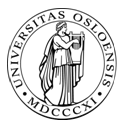|
Home
LaMDa News
Research projects
Group members
Publications
Talks/Posters
Public communications/Media
MLST/AFLP/MLEE databases
Jobs
Collaborations
Funding
Contact information
|
Exploration of microbial dynamics in pathogenic Francisella species
Francisella
The genus Francisella is defined as non-motile, gram-negative, strictly aerobic, facultative intracellular bacilli. Certain species within the genus Francisella are capable of causing severe invasive disease in both vertebrates
and invertebrates. The species of the Francisella genus can be divided into two groups; the Francisella tularensis group and the Francisella philomiragia group.
F. tularensis causes the zoonotic disease tularemia (harepest in Norwegian) and natural infections have been reported in a range of vertebrates and invertebrates. Due to its capacity to cause severe illness and death, and its
low infectious dose, F. tularensis is considered a Category A agent of bioterrorism. The Francisella philomiragia group consists of three species, i.e. F. philomiragia, F. noatunensis and F. asiatica. The two latter species has
only been isolated from diseased fish while F. philomiragia have been identified as a pathogen in both animals and humans.
Our research group is interested in understanding the impact of genome dynamics on the specific host−pathogen interaction of Francisella species where we use bacteria from the F. philomiragia group as a model system. As a whole,
little is known about the molecular basis of the putative virulence of the F. philomiragia group. New opportunities, however, are arising from sequencing several genomes of F. noatunensis and F. asiatica together with the already
completed genome of F. philomiragia. This is a great asset for the identification of potential virulence factors and will give new insight to the species specificity.
Francisellosis in fish
Francisella infection in fish was first described in 1970 and is today known as francisellosis. Epidemics have been found in both farmed and wild-fish from fresh, brackish and marine waters and include Atlantic cod, several
tilapias, bass and Atlantic salmon. Francisellosis is particularly a problem in the aquaculture industry with the domestication of Atlantic cod and thus of substantial economical consequences in the Norwegian fish farm industry.
Although Francisella has been recognized as a major agent for disease in fish, both in aquaculture and in wild stock and was recognized more than 20 years ago, the pathogenesis of this disease is far from understood. Even due to
major efforts, development of an efficient vaccine against fish francisellosis has not been successful. Thus, a through investigation of F. philomiragia pathogenesis and development of a vaccine is essential.
Projects:
Exploration of virulence factors in the F. philomiragia group with particular emphasis Type IV pilin like genes
PhD student cand. med. vet. Espen Brudal
In general, the adherence of microbes to any host tissue represents the initial step in the pathogenesis of infections. The successful colonization of surfaces by bacteria is often mediated by cell-surface organelles such as
pili and flagella. Pili are protein based hair like appendage and their expression are associated with a range of phenotypes in bacteria such as genetic exchange, locomotion, susceptibility to bacteriophages, biofilm formation
and the adherence of a bacterium to a host cell during infection.
Francisella species encodes several genes required for the functional expression of Type IV pili (T4P) genomes. A number of findings suggest that genes involved in T4P-associated biology impact on virulence in the F. tularensis
group. A feasible hypothesis is thus that the surface expression of T4P has an important impact on pathogenesis of F. philomiragia as well and is currently under investigation in our group.
Collaborators:
Dr. Duncan Colquhoun (Norwegian Veterinary Institute). Expertise regarding fish pathogenic Francisella species.
Professor Åke Forsberg (Umeå University, Sweden). Francisella molecular genetics.
Dr. Emelie Salomonsson (FOI, Umeå, Sweden). Francisella molecular genetics.
Professor Debra Milton (Umeå University, Sweden). Microbial molecular
genetics.
Professor Henning Sørum (The Norwegian School of Veterinary Sciences).
Fish microbial pathogenesis.
Professor Heidrunn Wergeland (University of Bergen). Intracellular
trafficking of F. noatunensis in the immune system of Atlantic cod.
Professor Ingolf Nes (The Norwegian University of Life Sciences).
Functional genomics and microarray technology.
Professor Gareth Griffits (Department of Molecular Biosciences, University
of Oslo). Fish model systems (Medaka, Zebrafish)
Professor Norbert Roos (Department of Molecular Biosciences, University of
Oslo). Electron microscopy.
Associated Professor William Davies (Department of Molecular Biosciences,
University of Oslo). Francisella microbiology.
|



